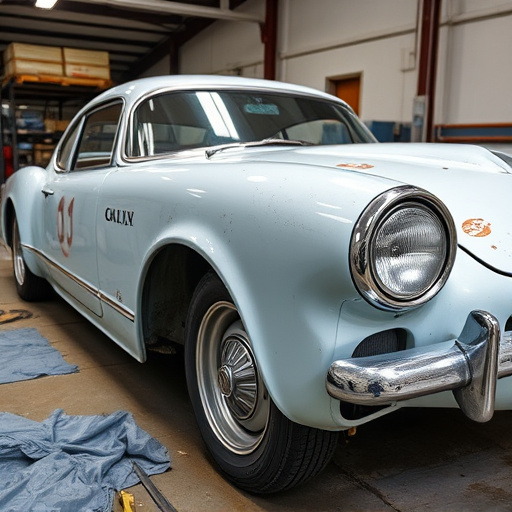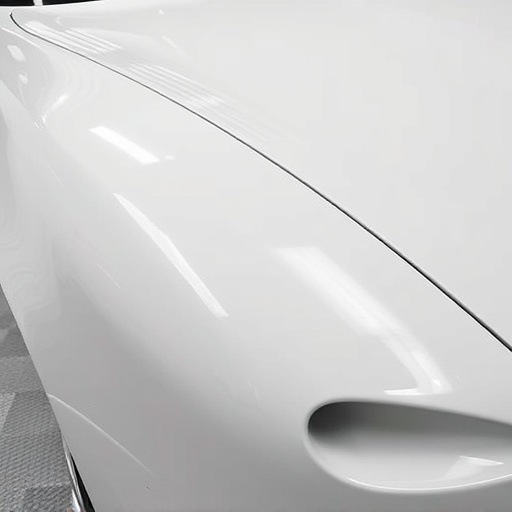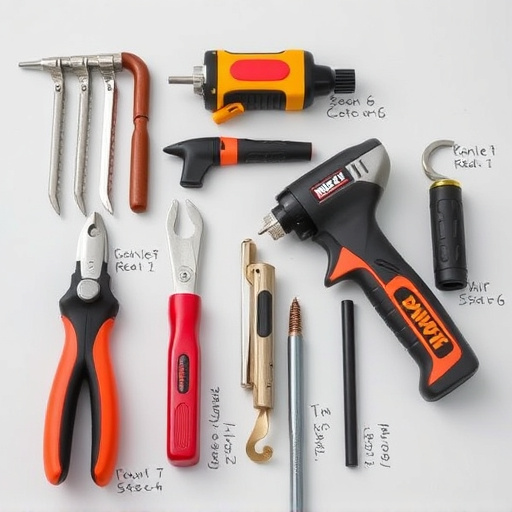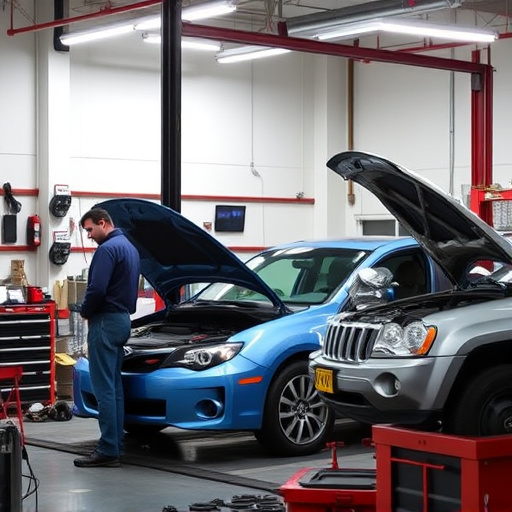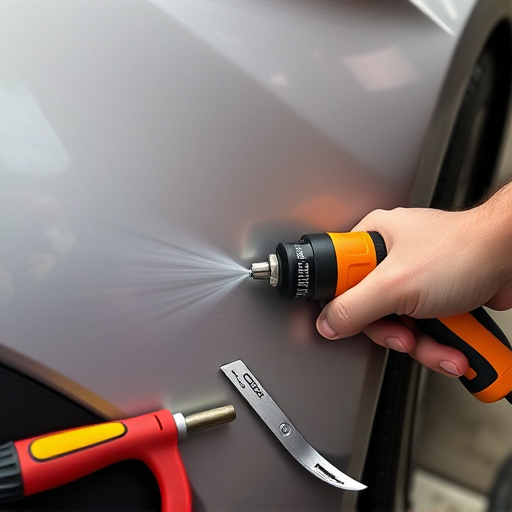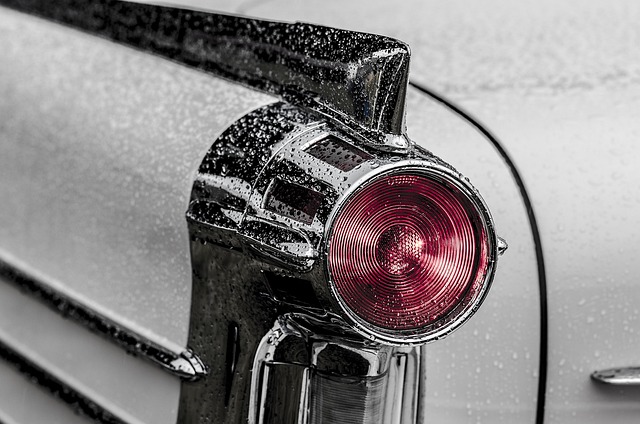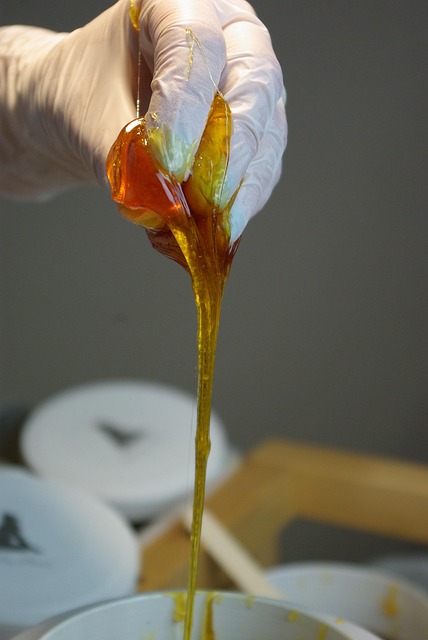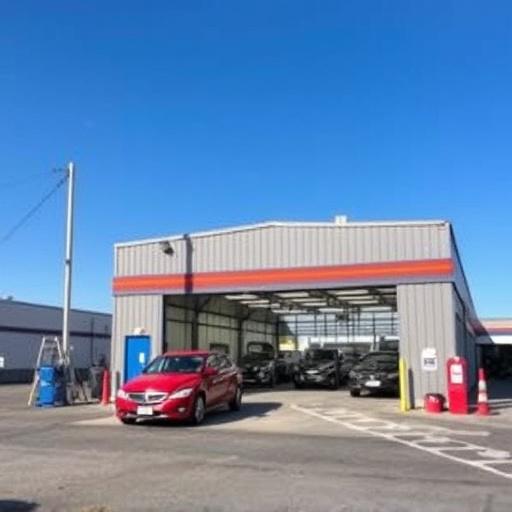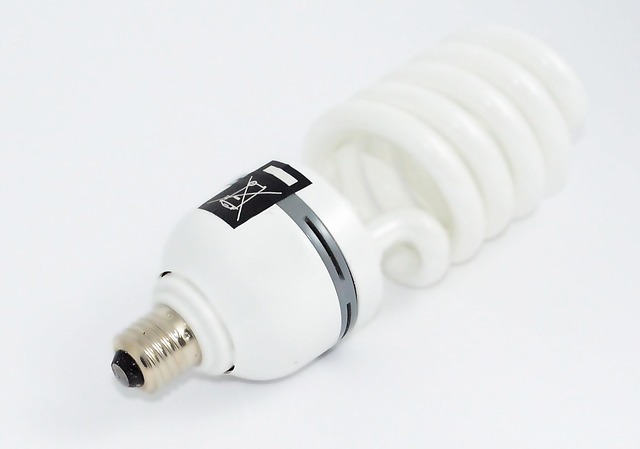Safety glass replacement is a critical aspect of maintaining security and functionality across various settings, from homes to commercial buildings and vehicles. Certified safety glass that meets industry standards and local regulations is essential for collision repair services, preserving structural integrity and enhancing safety for drivers, passengers, and pedestrians. Different types of safety glass, like tempered and laminated, cater to specific needs, with impact resistance, clarity, and compliance with local laws being key focus points, emphasizing the SEO keyword "safety glass replacement." Legal frameworks govern glass types, installation methods, and performance standards in residential, commercial, and automotive sectors, ensuring safety and quality.
In today’s world, ensuring the safe and legal replacement of glass is paramount for structural integrity and liability prevention. This comprehensive guide delves into the key elements that underpin this critical process, from understanding safety glass types and navigating regulatory frameworks to implementing best practices during installation.
We’ll explore essential steps, including damage assessment, removal techniques, and reinforcement methods, while highlighting the importance of choosing reputable professionals with the necessary licenses, insurance, and certifications. Discover how these factors contribute to a secure and compliant glass replacement process.
- Understanding Safety Glass and Its Regulations
- – Definition of safety glass and its types
- – Legal frameworks and standards governing glass replacement
Understanding Safety Glass and Its Regulations

Safety glass replacement is a critical aspect of ensuring both functionality and safety in various settings, from residential to commercial structures. Understanding safety glass goes beyond its basic definition; it involves comprehending the regulations that govern its installation and use. These regulations are designed to protect individuals from potential hazards associated with broken glass, particularly in high-traffic areas or places where unexpected collisions might occur.
In the context of collision repair services and automotive collision repair, safety glass plays a pivotal role. When a vehicle sustains damage, the replacement of windows and other glass components must adhere to specific standards to prevent further risks. This includes using certified safety glass that meets or exceeds industry guidelines, ensuring proper fitment, and following best practices for installation. Such measures not only guarantee the structural integrity of the vehicle but also contribute to the overall safety of drivers, passengers, and pedestrians in case of future collisions.
– Definition of safety glass and its types

Safety glass is a specialized type of enhanced glass designed to provide superior protection and minimize the risk of injury when broken. It’s characterized by its high impact resistance and ability to prevent sharp fragments from flying upon impact, making it ideal for applications where safety is paramount. This includes windows in public buildings, vehicle windshields, and even screens on electronic devices. There are several types of safety glass, each with unique properties tailored to specific needs. For instance, tempered glass, one of the most common forms, shatters into small, non-sharp pieces when broken, reducing the potential for serious injury. Laminated glass is another variant that consists of multiple layers, including an interlayer that bonds the glass together, ensuring it remains intact even if cracked. This makes it popular in auto body services for car dent repair and body restoration projects, as it provides superior structural integrity and safety during accidents.
When considering safety glass replacement, whether for a vehicle or any other application, it’s crucial to understand the specific requirements and regulations governing your region. Different locations have varying standards for what constitutes safe and legal glass, particularly in terms of impact resistance and clarity. Auto body services that specialize in car dent repair and body restoration should be adept at providing this type of glass to ensure both safety and compliance with local laws. Incorporating safety glass into these processes not only safeguards the individuals using the vehicles or occupying the buildings but also enhances the overall structural integrity, contributing to a safer environment for all.
– Legal frameworks and standards governing glass replacement

The legal frameworks governing glass replacement are designed to ensure safety and quality across various sectors, from residential to commercial and automotive applications. These regulations often dictate the types of glass that can be used, installation methods, and performance standards. For instance, in many regions, safety glass replacement for vehicles must comply with specific auto body work standards, ensuring that windows not only protect against impact but also fragment safely in case of a car collision repair. This involves using laminated or tempered glass, which is more resistant to shattering, thereby minimizing the risk of injury.
In addition to these safety considerations, there are industry-specific standards for glass replacement, such as those set by building codes and architectural guidelines. These standards ensure that glass in structures like buildings and bridges is installed correctly and meets the required impact resistance and insulation properties. Understanding these legal frameworks and standards is crucial for anyone involved in car collision repair or auto body work to guarantee not only compliance but also the highest level of safety in glass replacement projects.
When it comes to safety glass replacement, understanding both the material and the regulatory landscape is paramount. By adhering to legal frameworks and industry standards, professionals can ensure that replacements are not only safe but also conform to essential guidelines. Incorporating these key elements guarantees not just compliance but also enhances the structural integrity and longevity of glass structures, providing peace of mind for occupants and stakeholders alike.
